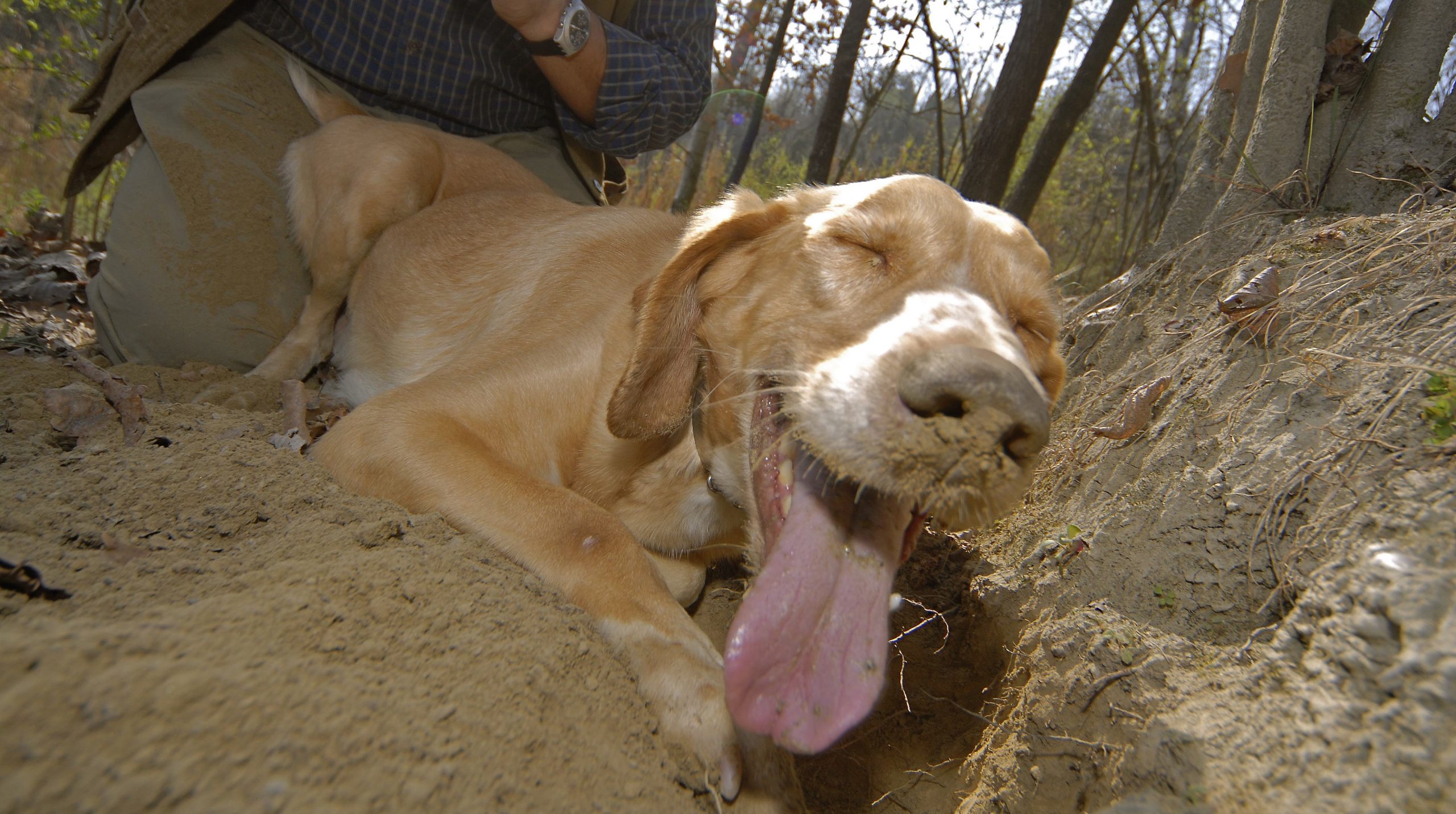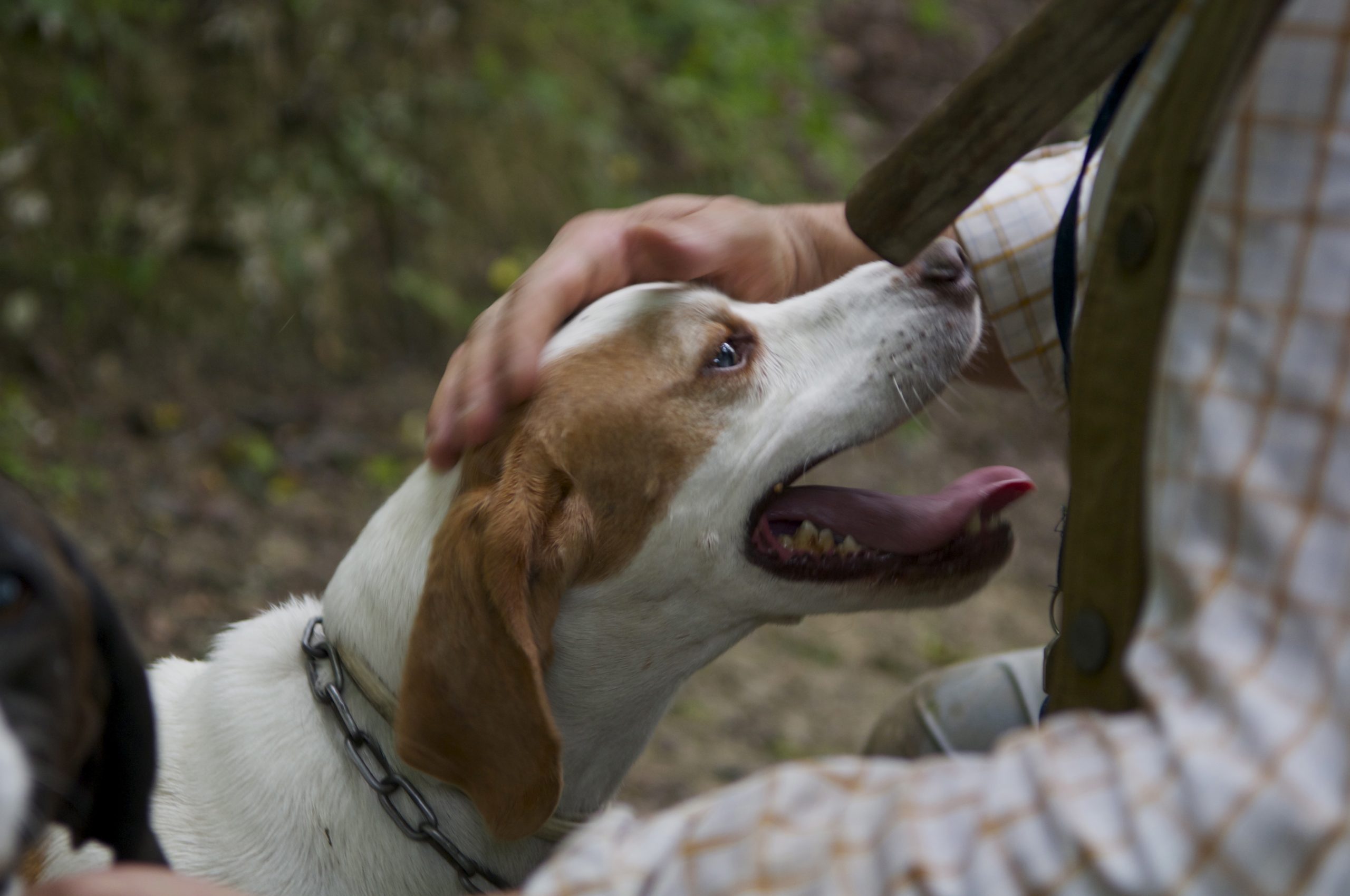Editorial
TRUFFLE HUNTING DOGS
on 20 September 2024

It is just over two months until the start of the summer truffle season (tuber aestivum Vitt.) and the trifulao are starting to train new young dogs or refining veteran ones.
Here is some reading on the characteristics of truffle dogs and some advice on how to try and train one.
We would like to remind you that the truffle dog is not only a friend and trusted collaborator in the search, but is by law an obligatory element for those who want to go into the woods in search of the precious tuber.
Each hunter may use a maximum of two dogs for the search.
The maximum number of two is dictated by the fact that training can be carried out using a more experienced specimen as an example for the younger dog.
The use of specially trained dogs for searching is compulsory.
On the other hand, it is not compulsory to be the owner of the dog; for these aspects, reference must be made to the regulations in force concerning civil and criminal responsibilities relating to the ownership of pets.
All dogs, whether purebred or mixed breed, can be trained to search for truffles. There are, however, a number of factors that influence the success of training, including the desire to learn, which in the dog translates into a desire to play. Breed and age are relevant but not decisive factors, and much depends on the individual’s aptitude.
When choosing a dog, it is first necessary to consider whether to go for a puppy or an adult, already trained subject, in which case the assessment of the individual subject must be taken into account and he must be observed at work on natural terrain, repeatedly.
In any case, it is better to prefer a young dog because it is more likely to establish a correct relationship than an older dog, even if it is already trained.
In most cases, the purchase of a puppy is based primarily on an assessment of the truffle-hunting aptitude of the different breeds.
The Ente Nazionale della Cinofilia Italiana (E.N.C.I.) has approved the standard of the Lagotto Romagnolo with the following usage: ‘dog spe- cialised in the search for truffles on any type of terrain’. Therefore, the Lagotto Romagnolo becomes the first and only officially recognised ‘truffle dog’.
This is an ancient breed for truffle hunting, present since the 16th century in the Comacchio valleys and lagoons of Ravenna. Due to the land reclamation that, in the second half of the 19th century, led to the gradual reduction of the immense Comacchio and Romagna marshes, causing the almost complete disappearance of the Vallaroli, the Lagotto also gradually lost its function as an aquatic dog and managed to survive and survive to the present day, specialising in truffle hunting.
Its marked aptitude for searching, its great trainability and precocity and the disappearance of the hunting instinct make it a dog with ideal characteristics for this work. It should be noted how the selection carried out in recent years with the return to the original morphology has further refined the working aptitude.
But in addition to the Lagotto many other breeds and crossbreeds are profitably used in the search, as most truffle hunters seem to prefer subjects belonging to the most varied breeds.
Crosses between breeds are becoming more and more aimed at combining searching aptitudes and resistance skills with a pleasing physical appearance. One of the most frequently used cross-breeds is the Bracco-Pointer, because it maintains a ‘special’ searching ability and is more resistant to fatigue. Other more frequently used crossbreeds of hunting dogs are Breton-Pointer, Bracco-Pointer, Spinone-Pointer and others.
More and more frequent is the use of pure breeds that, in addition to the Lagotto, also include search, stationary and retrieval dogs such as the Pointer, Kurzhaar, Drathaar, Spinone, Breton and Springer Spaniel. In recent times, breeds such as the Labrador, Korthals and a medium-sized herding dog such as the Border Collie are gaining ground.

Training
Training begins in the first months of life, generally from the third to the sixth month, and should be a time of play and fun.
The main aims of training are
– to imprint the unmistakable characteristics of the truffle in the dog (first and foremost the smell),
– to stimulate the search spirit,
– teaching the dog that, at a nod from its owner, it must inter- rupture the dig with its paws,
– teach the dog not to be distracted by the possible presence of mice,
birds etc,
– get the dog used to insisting on its valuable work.
At first the puppy will be made to play with truffle pieces that it will soon learn to search for on the ground by following their scent and then to eat them. Next, a rag ball containing truffles will be thrown for the dog to chase and catch in its mouth. The exercises should be repeated for a few minutes every day and should be interrupted as soon as the dog’s attention wanes.
Gradually he should be taught to retrieve the ball and when he has learnt to do so he should be rewarded with strokes and a treat. When you realise that the search is carried out with passion and joy you will move on to burying the ball in an open hole or crevice in the ground and inciting the dog to scrape for it.
Next we will move on to burying real truffles by spreading the smell in the ground. When the dog ‘digs out’ the previously hidden truffles with ease, it is ready for the field test. He will then be taken to a natural truffle ground, where it may be useful, for the first few times, to put him in the company of a more experienced dog.
After he has ‘truffled’ several times in company it is advisable to take him out alone. The training phase is over, all that remains is to intensify the outings to allow the dog to ‘dig’ as many times as possible; only in this way will it become a fully-fledged truffle dog giving better results around the age of two years if it is a female, the following year if it is a male.
The hunter must love his dog and succeed in winning its sympathy, treating it firmly but with due delicacy, without beatings or other corporal punishment prohibited by law.
Good luck to those who have decided to embark on this wonderful adventure!!!
Remembering that training the dog is not enough, the human must also be trained by studying for the compulsory prospector’s licence.

